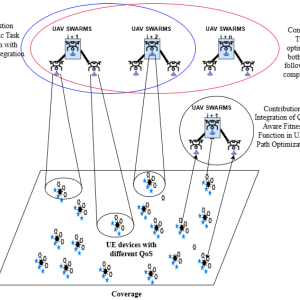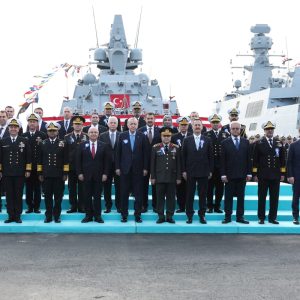The increasing reliance on drones in various military conflicts has necessitated a shift in training methodologies and the modernization of existing platforms to effectively counter these threats. The Russian Federation, recognizing the strategic importance of drone warfare, has embarked on a comprehensive modernization program aimed at modernizing Yak-52B2 for Drone Warfare. This article delves into the intricacies of Russia’s modernization efforts, the significance of the Yak-52B2 platform, and its implications for future combat scenarios.

The Strategic Importance of Drone Warfare
The Rise of Drones in Military Operations
Over the past two decades, drones have revolutionized military operations across the globe. Initially used for reconnaissance and intelligence gathering, drones have evolved into versatile platforms capable of conducting precision strikes, electronic warfare, and even swarming attacks. Their ability to operate in contested environments, evade traditional air defenses, and execute missions without risking human lives has made them indispensable assets in modern warfare.
Challenges Posed by Drones
The proliferation of drones has introduced new challenges for military forces worldwide. Drones can be employed by state and non-state actors alike, making them a versatile tool for asymmetric warfare. Their small size, low radar cross-section, and agility make them difficult to detect and intercept using conventional air defense systems. Moreover, the advent of swarm technology, where multiple drones operate in a coordinated manner, presents a significant threat to traditional military assets.
Russia’s Response to the Drone Threat
In response to the growing drone threat, Russia has prioritized the development of advanced anti-drone technologies and the modernization of its existing platforms. The Yak-52B2, a primary trainer aircraft initially designed for pilot training, has been identified as a suitable platform for conversion into a combat-capable system specifically designed to counter drones. This decision underscores Russia’s commitment to maintaining its military edge in an era where drone warfare is becoming increasingly prevalent.
The Yak-52B2: A Legacy Platform with New Capabilities
Historical Background of the Yak-52B2
The Yakovlev Yak-52B2 is a variant of the Yak-52, a Soviet-era primary trainer aircraft that has been in service since the late 1970s. Originally designed for aerobatic training, the Yak-52B2 has been widely used in both military and civilian aviation circles. Its robust design, ease of maintenance, and excellent handling characteristics have made it a popular choice for pilot training programs in several countries.
Technical Specifications
The Yak-52B2 is a single-engine, two-seat aircraft powered by a Vedeneyev M14P radial engine, producing approximately 360 horsepower. The aircraft has a maximum speed of around 285 km/h (177 mph) and a service ceiling of 4,000 meters (13,000 feet). Its simple yet effective design allows for a high degree of maneuverability, making it an ideal platform for training pilots in basic and advanced aerobatic techniques.
Why the Yak-52B2?
The decision to modernize the Yak-52B2 for combat roles, specifically anti-drone warfare, may seem unconventional at first glance. However, the Yak-52B2’s inherent strengths—its agility, low operational costs, and versatility—make it a suitable candidate for such a transformation. The aircraft’s ability to perform tight maneuvers at low altitudes, combined with its relatively small size, makes it an ideal platform for engaging drones in close-quarters combat scenarios.
Modernization of the Yak-52B2: Key Enhancements
Avionics Upgrade
One of the most significant aspects of the Yak-52B2 modernization program is the comprehensive upgrade of its avionics suite. The original instrumentation, designed primarily for basic training, has been replaced with state-of-the-art digital avionics systems. These new systems include advanced flight control systems, digital heads-up displays (HUDs), and modern communication equipment, all of which are essential for conducting complex combat missions.
Integration of Advanced Sensors
To effectively counter drones, the Yak-52B2 has been equipped with a range of advanced sensors. These include electro-optical/infrared (EO/IR) sensors, which allow the aircraft to detect and track drones in both day and night conditions. Additionally, the aircraft has been fitted with radar systems capable of detecting small, low-flying drones that may evade ground-based radar systems. These sensors are integrated into the aircraft’s fire control system, enabling the pilot to engage targets with a high degree of accuracy.
Weaponization: From Trainer to Combat Aircraft
The most significant transformation in the Yak-52B2 modernization program is its conversion into a combat-capable aircraft. The modernization effort has seen the integration of various weapon systems specifically designed to counter drones. These include:
- Air-to-Air Missiles: The Yak-52B2 has been equipped with short-range air-to-air missiles designed to intercept and destroy drones. These missiles, guided by the aircraft’s advanced sensors, provide a high probability of kill against agile and fast-moving targets.
- Machine Guns and Cannons: The aircraft has been fitted with underwing gun pods housing 12.7mm machine guns or 23mm cannons. These weapons are particularly effective against small and medium-sized drones that may be difficult to target with missiles.
- Electronic Warfare Capabilities: Recognizing the importance of non-kinetic methods in drone warfare, the Yak-52B2 has been equipped with electronic warfare (EW) systems. These systems can jam or disrupt the communication links between drones and their operators, effectively neutralizing the threat without the need for physical destruction.
Enhanced Survivability Features
Given the high-risk environment in which the Yak-52B2 is expected to operate, the modernization program has also focused on enhancing the aircraft’s survivability. This includes the installation of advanced countermeasures such as chaff and flare dispensers to evade enemy missiles. The aircraft’s structure has also been reinforced to improve its resilience against damage, ensuring that it can continue to operate even after sustaining hits.
Training and Simulation
To fully leverage the upgraded capabilities of the Yak-52B2, Russian pilots undergo extensive training programs tailored to the new operational requirements. This includes training in anti-drone tactics, electronic warfare, and the use of the aircraft’s advanced weapon systems. Additionally, the modernization program has introduced state-of-the-art simulators that allow pilots to practice complex combat scenarios in a controlled environment, thereby enhancing their readiness for real-world operations.
Strategic Implications of the Yak-52B2 Modernization
Deterring Asymmetric Threats
The modernization of the Yak-52B2 is a clear indication of Russia’s proactive approach to addressing asymmetric threats, particularly those posed by drones. By converting a legacy trainer aircraft into a combat platform capable of engaging drones, Russia is demonstrating its ability to adapt to emerging threats in a cost-effective manner. This approach not only deters potential adversaries but also provides Russia with a flexible and scalable solution to counter the growing use of drones in conflict zones.
Impact on Regional Security Dynamics
The deployment of modernized Yak-52B2 aircraft is likely to have a significant impact on regional security dynamics, particularly in areas where drone warfare is prevalent. The enhanced anti-drone capabilities of the Yak-52B2 will enable Russian forces to maintain air superiority in contested environments, thereby shifting the balance of power in their favor. This, in turn, could influence the strategic calculations of neighboring countries and non-state actors, potentially leading to an arms race in anti-drone technologies.
A Model for Future Modernization Programs
Russia’s approach to modernizing the Yak-52B2 could serve as a model for other countries looking to enhance their military capabilities in a cost-effective manner. By leveraging existing platforms and upgrading them with modern technologies, countries can rapidly field new capabilities without the need for costly and time-consuming development programs. This approach is particularly relevant in the context of drone warfare, where the threat landscape is constantly evolving, and timely responses are crucial.
Conclusion
The modernization of the Yak-52B2 trainers represents a significant step forward in Russia’s efforts to counter the growing threat of drones in modern warfare. By upgrading a legacy platform with advanced avionics, sensors, and weapon systems, Russia has effectively transformed the Yak-52B2 into a versatile combat aircraft capable of engaging drones in a wide range of operational scenarios. This modernization program not only enhances Russia’s military capabilities but also underscores the strategic importance of adapting to emerging threats in an increasingly complex global security environment.
As drone warfare continues to evolve, the lessons learned from the Yak-52B2 modernization program will likely inform future efforts to counter this ever-present threat. Whether through the development of new platforms or the upgrading of existing ones, the ability to effectively counter drones will remain a critical component of military strategy in the years to come. Russia’s proactive approach in this domain serves as a testament to its commitment to maintaining its military edge in the face of new and evolving challenges.










